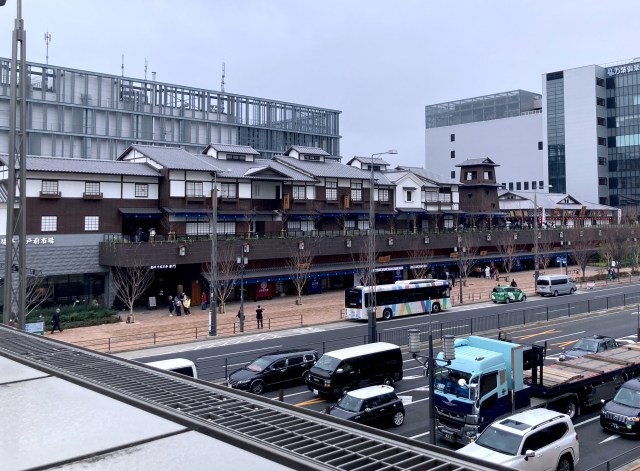
Toyosu Senkyaku Banrai brings the charm of an old market town to a new tourist site in Tokyo.
Back in October 2018, the Tsukiji Market and its early-morning tuna auctions moved from Tsukiji to Toyosu, marking a new chapter in the market’s 83-year history.
▼ The Tsukiji Market was a huge and sprawling mass of fish mongers that attracted hordes of overseas tourists.
While the main market moved to a sparkling new multi-storey complex in Toyosu, Tsukiji’s outer market, made up of hole-in-the-wall eateries and food stalls, remained in its original location closer to the central road, retaining an old-school charm that still attracts a huge number of tourists to this day.
However, the new Toyosu fish market receives considerably less visitors in its comparatively out-of-the-way location, and without a bustling outer market like the one at Tsukiji, there’s not a lot to attract overseas travellers to the area.
A new Edo-themed complex called Edomae Jokamachi opened at Toyosu in 2020 to provide the appeal of an outer market for tourists, but it closed soon after when the pandemic hit.
Now, four years after that closure, a new complex has sprung up to replace it, and its name, “Senkyaku Banrai“, hints at its ambitions because it’s a phrase that literally translates as, “a thousand visitors, many guests” and means “a flood of customers” or “a roaring trade“.
The new complex opened on 1 February, and our reporter Mr Sato was keen to see if it really was attracting the thousand visitors it was hoping for, so he hopped on a train to check it out.
When he got off the Yurikamome-line train at Shijo-mae Station and went through the ticket gate, he noticed there were quite a few people around.
This was more than he expected on a weekday roughly three weeks after the grand opening, so he had high hopes for its trade as he walked towards the cluster of traditional buildings.
▼ The Japanese-style townscape stood out against the modern tower apartments and office buildings of Toyosu.
▼ When he arrived at the facility, he discovered that the commercial part of the complex covers three stories.
After passing through the main entrance, you arrive at the Toyosu Edomae Market, a line of shops that create the sense of an outer market.
Here, food vendors sell meals made with ingredients delivered directly from the fish market, and Mr Sato could see long lines outside many of them. However, he hardly saw any overseas visitors, as the majority of people at the complex appeared to be Japanese locals.
▼ At Marutake, a famous tamagoyaki seller from Tsukiji’s outer market, the line was so long he couldn’t even see where it ended.
The tuna skewer vendor and the matcha crepe stand were also popular, and so packed with people that he didn’t know how long the wait would be. So instead of lining up, he walked through the market until he arrived at Toki no Kane Square, where you can sit and enjoy meals in an al fresco environment.
▼ Toki no Kane (“Time Bell Tower”) is a famous site of interest at Kawagoe in Tokyo’s neighbouring Saitama Prefecture, and this square has a perfect replica of it.
There might not have been thousands of customers here on a weekday, but there were still hundreds of them, which meant that when he went up to the food court on the third floor to find a place to eat, a lot of the restaurants had long wait times.
Mr Sato’s belly was really starting to grumble now, so he decided to try a hack he’d heard about, which was to head out to the Toyosu Market and over to the “関連飲食店舗” (“kanren inshokutenpo”), which are “connected restaurants”, meaning they have a connection to the market and are used by people directly involved in the operations, but also open to the public.
▼ The location of the kanren inshokutenpo in red and black, with Senkyaku Banrai marked out in blue and white.
As the related restaurants are used by market workers, they’re generally open from early morning and are completely calm and uncrowded by noon. The early morning start means some of these restaurants may even close by midday, so they’re far less crowded than the other restaurants in the complex, but still a great place for fresh food.
This is where Mr Sato once ate a beef bowl at Yoshinoya Branch #1, which relocated from Tsukiji, and he was able to enjoy it here again, as it’s open from 4 a.m. to 2 p.m. So if you’re having trouble finding a place to eat due to the hundreds of visitors you might encounter at Senkyaku Banrai on a weekday, or the thousands of visitors you might encounter on a weekend, don’t forget you can always pop out to Toyosu Market for a quick bite to satiate your hunger.
Of course, you could make the visit to Senkyaku Banrai even more relaxing by staying at the onsite Tokyo Toyosu Manyo Club, a 24-hour hot spring bathing and lodging facility with 71 guest rooms. Judging by the popularity of the new facility, the idea to bring a little taste of the Tsukiji outer market over to the new Toyosu location is one that’s certainly paid off, but it’s still relatively unknown by overseas visitors. So next time you’re in the mood for fresh seafood and a soak in a hot spring, don’t forget to add Toyosu Senkyaku Banrai to your itinerary!
Site information
Toyosu Senkyaku Banrai / 豊洲千客万来
Address: Tokyo-to, Koto-ku, Toyosu 6-5-1
東京都江東区豊洲6丁目5番1号
Website (Toyosu Senkyaku Banrai, Tokyo Toyosu Manyo Club)
Photos ©SoraNews24
● Want to hear about SoraNews24’s latest articles as soon as they’re published? Follow us on Facebook and Twitter!
[ Read in Japanese ]

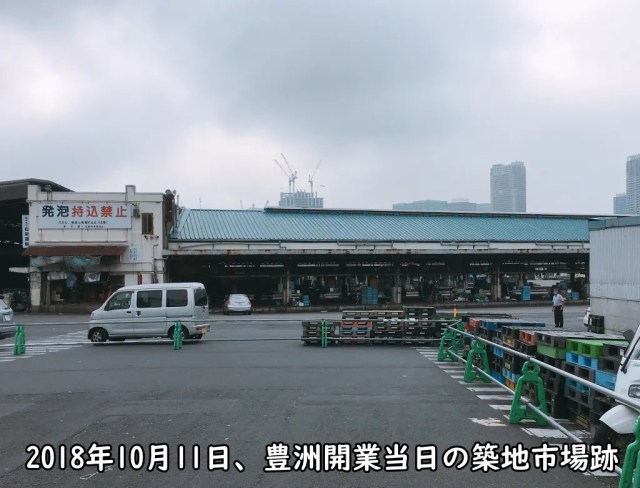

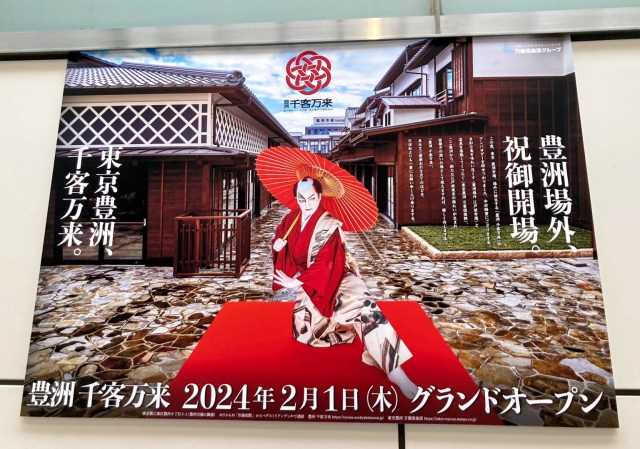
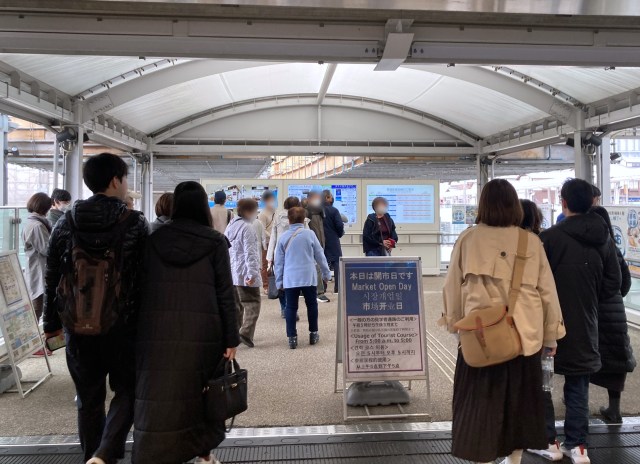
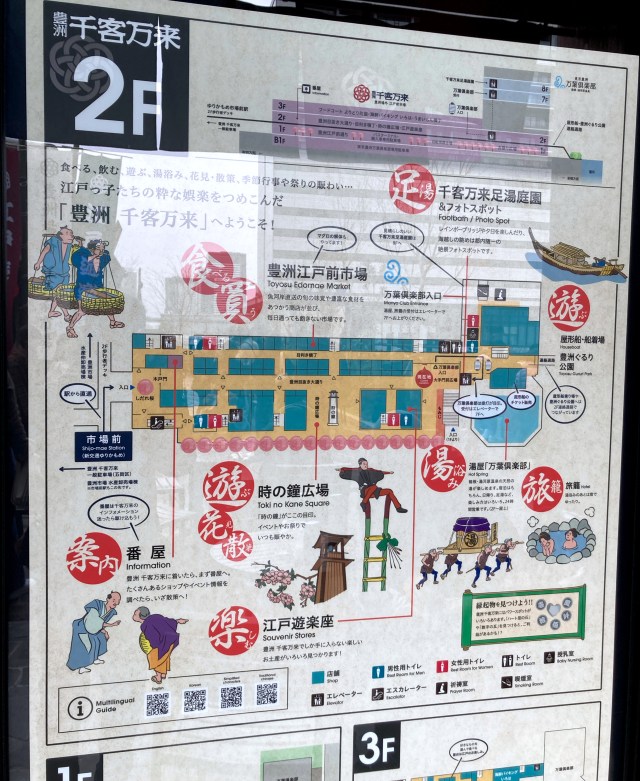

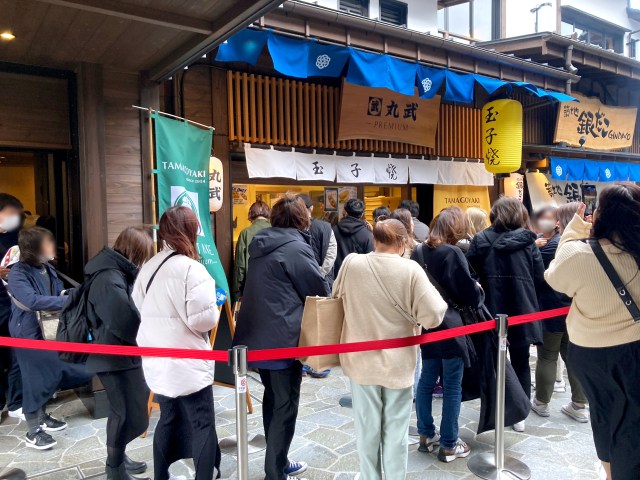
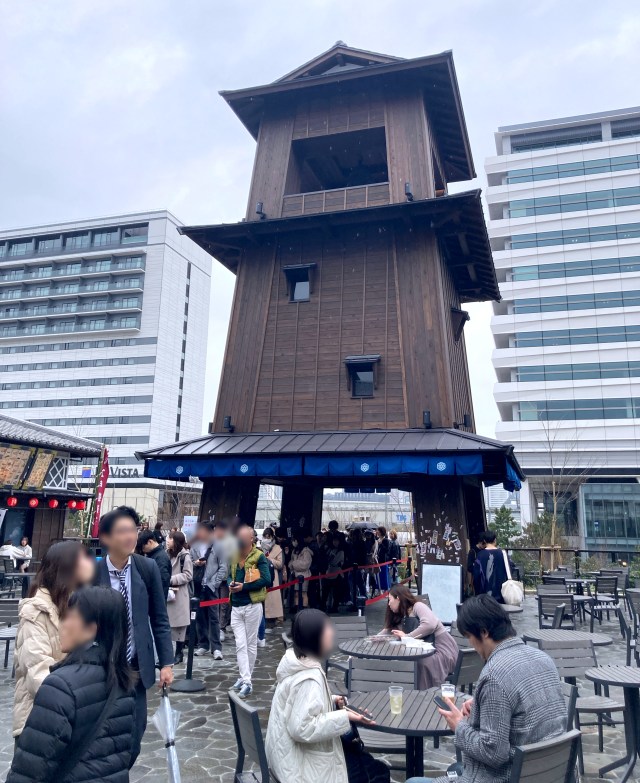
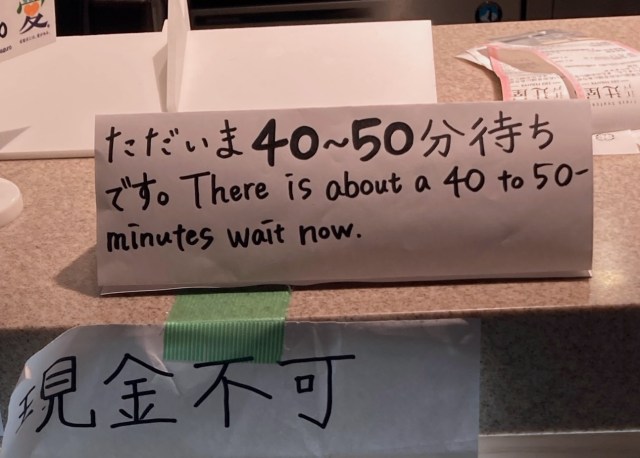
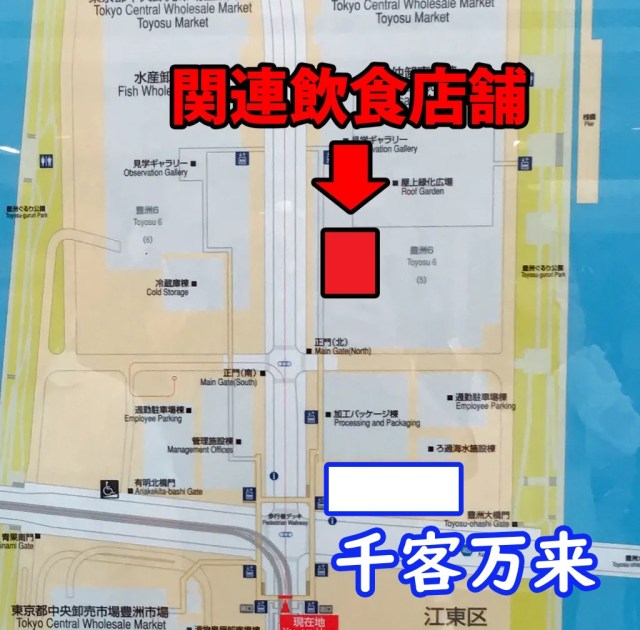
 Tokyo’s newest hot spring bathhouse and foodie spot opening next to Japan’s biggest fish market
Tokyo’s newest hot spring bathhouse and foodie spot opening next to Japan’s biggest fish market With its Inner Market closed down, we stop by Tsukiji to see how Tokyo’s sushi mecca is coping
With its Inner Market closed down, we stop by Tsukiji to see how Tokyo’s sushi mecca is coping Beware the rise of overpriced “Inbound Don” at tourist spots in Japan
Beware the rise of overpriced “Inbound Don” at tourist spots in Japan Sushi Dai and other famous restaurants from Tsukiji fish market open at new Toyosu location
Sushi Dai and other famous restaurants from Tsukiji fish market open at new Toyosu location Restaurants, Roads, Rats: How has Tsukiji changed after the fish market move?
Restaurants, Roads, Rats: How has Tsukiji changed after the fish market move? How to order snacks on a Shinkansen bullet train in Japan
How to order snacks on a Shinkansen bullet train in Japan Japan’s new difficult-to-drink-from beer glass protects your liver, but it’s a brutal experience
Japan’s new difficult-to-drink-from beer glass protects your liver, but it’s a brutal experience Demon Slayer: Kimetsu no Yaiba gets new roller coaster attractions and food at Universal Studios Japan
Demon Slayer: Kimetsu no Yaiba gets new roller coaster attractions and food at Universal Studios Japan Hello, cosmetics! Clinique teams up with Hello Kitty this summer for first-time collaboration
Hello, cosmetics! Clinique teams up with Hello Kitty this summer for first-time collaboration High-fashion Totoro cuddle purse is like an elegant stroll in the forest【Photos】
High-fashion Totoro cuddle purse is like an elegant stroll in the forest【Photos】 Princesses, fruits, and blacksmiths: Study reveals the 30 most unusual family names in Japan
Princesses, fruits, and blacksmiths: Study reveals the 30 most unusual family names in Japan Cup Noodles Fried Rice: Super-easy recipe will make you a potluck or campsite hero【SoraKitchen】
Cup Noodles Fried Rice: Super-easy recipe will make you a potluck or campsite hero【SoraKitchen】 Pikachu Outbreak 2018 photos! Pikachus parade through Yokohama, bust out dance moves at night
Pikachu Outbreak 2018 photos! Pikachus parade through Yokohama, bust out dance moves at night Hello Kitty isn’t a cat!? We called Sanrio to find out!
Hello Kitty isn’t a cat!? We called Sanrio to find out!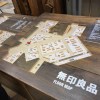 The world’s biggest Muji store opened in Hiroshima, and we went to check it out!
The world’s biggest Muji store opened in Hiroshima, and we went to check it out! Nintendo history you can feel – Super NES, N64, and GameCube controllers become capsule toys
Nintendo history you can feel – Super NES, N64, and GameCube controllers become capsule toys “The most Delicious Cup Noodle in history” – Japan’s French Cup Noodle wins our heart【Taste test】
“The most Delicious Cup Noodle in history” – Japan’s French Cup Noodle wins our heart【Taste test】 Starbucks releases a cute Frappuccino and Unicorn Cake…but not in Japan
Starbucks releases a cute Frappuccino and Unicorn Cake…but not in Japan Kyoto Tower mascot termination reveals dark side behind cute Japanese characters
Kyoto Tower mascot termination reveals dark side behind cute Japanese characters McDonald’s Japan’s Soft Twist Tower: A phantom ice cream only sold at select branches
McDonald’s Japan’s Soft Twist Tower: A phantom ice cream only sold at select branches Yabai Ramen: What makes this Japanese ramen so dangerous?
Yabai Ramen: What makes this Japanese ramen so dangerous? Finally! Nintendo Japan expands Switch 8-bit controller sales to everybody, Online member or not
Finally! Nintendo Japan expands Switch 8-bit controller sales to everybody, Online member or not Japanese government wants to build luxury resorts in all national parks for foreign tourists
Japanese government wants to build luxury resorts in all national parks for foreign tourists To combat declining birth rate, Japan to begin offering “Breeding Visas” to foreigners
To combat declining birth rate, Japan to begin offering “Breeding Visas” to foreigners 10 things you should buy at 7-Eleven in Japan
10 things you should buy at 7-Eleven in Japan Studio Ghibli releases anime heroine cosplay dresses that are super comfy to wear
Studio Ghibli releases anime heroine cosplay dresses that are super comfy to wear Woman charged for driving suitcase without a license in Osaka
Woman charged for driving suitcase without a license in Osaka Studio Ghibli unveils My Neighbour Totoro miniature house model
Studio Ghibli unveils My Neighbour Totoro miniature house model Kyoto experiencing problems with foreign tourists not paying for bus fares, but not on purpose
Kyoto experiencing problems with foreign tourists not paying for bus fares, but not on purpose Fighting mild hunger with a Japanese soda that turns into jelly in the stomach【Taste test】
Fighting mild hunger with a Japanese soda that turns into jelly in the stomach【Taste test】 Studio Ghibli’s Howl’s Moving Castle tapestry unveiled in Japan for first time
Studio Ghibli’s Howl’s Moving Castle tapestry unveiled in Japan for first time McDonald’s new Happy Meals offer up cute and practical Sanrio lifestyle goods
McDonald’s new Happy Meals offer up cute and practical Sanrio lifestyle goods Sales of Japan’s most convenient train ticket/shopping payment cards suspended indefinitely
Sales of Japan’s most convenient train ticket/shopping payment cards suspended indefinitely Sold-out Studio Ghibli desktop humidifiers are back so Totoro can help you through the dry season
Sold-out Studio Ghibli desktop humidifiers are back so Totoro can help you through the dry season Japanese government to make first change to romanization spelling rules since the 1950s
Japanese government to make first change to romanization spelling rules since the 1950s Foreigner’s request for help in Tokyo makes us sad for the state of society
Foreigner’s request for help in Tokyo makes us sad for the state of society Ghibli founders Toshio Suzuki and Hayao Miyazaki contribute to Japanese whisky Totoro label design
Ghibli founders Toshio Suzuki and Hayao Miyazaki contribute to Japanese whisky Totoro label design Doraemon found buried at sea as scene from 1993 anime becomes real life【Photos】
Doraemon found buried at sea as scene from 1993 anime becomes real life【Photos】 Tokyo’s most famous Starbucks is closed
Tokyo’s most famous Starbucks is closed Tokyo braces for potential rat infestation as Tsukiji fish market closes
Tokyo braces for potential rat infestation as Tsukiji fish market closes This 7-Eleven convenience store causes a buzz with foreigners online
This 7-Eleven convenience store causes a buzz with foreigners online 5 reasons why foreign tourists should skip Tsukiji and go to a different place in Tokyo instead
5 reasons why foreign tourists should skip Tsukiji and go to a different place in Tokyo instead Mr. Sato attacks a massive castle of seafood at a new restaurant in Tokyo Skytree’s Solamachi
Mr. Sato attacks a massive castle of seafood at a new restaurant in Tokyo Skytree’s Solamachi Bluefin tuna fish sells for bargain low price of roughly US$200,000 in Tokyo auction
Bluefin tuna fish sells for bargain low price of roughly US$200,000 in Tokyo auction How to choose a great block of sashimi-grade tuna – 66-year maguro master shares his protips
How to choose a great block of sashimi-grade tuna – 66-year maguro master shares his protips Huge fire breaks out at Tokyo’s world-famous Tsukiji Fish Market【Videos, photos】
Huge fire breaks out at Tokyo’s world-famous Tsukiji Fish Market【Videos, photos】 Amazing new Tokyo art exhibit lets you create cherry blossoms just by touching light【Video】
Amazing new Tokyo art exhibit lets you create cherry blossoms just by touching light【Video】 Tokyo’s sushi spirit shrine, where the souls of seafood slumber
Tokyo’s sushi spirit shrine, where the souls of seafood slumber Tokyo restaurant wins prized tuna at New Year auction for 114.2 million yen and serves it up to customers
Tokyo restaurant wins prized tuna at New Year auction for 114.2 million yen and serves it up to customers Tokyo’s first sushi cake specialty store opens in Japan
Tokyo’s first sushi cake specialty store opens in Japan Why hayashi rice should be your last meal before leaving Japan
Why hayashi rice should be your last meal before leaving Japan Huge tuna fish sells for a whopping 190 million yen at the first wholesale auction of the year
Huge tuna fish sells for a whopping 190 million yen at the first wholesale auction of the year Yaizu: Japan’s best sushi market destination even most foodies in Japan have never heard of
Yaizu: Japan’s best sushi market destination even most foodies in Japan have never heard of Monjayaki vending machine appears in Tokyo
Monjayaki vending machine appears in Tokyo
Leave a Reply